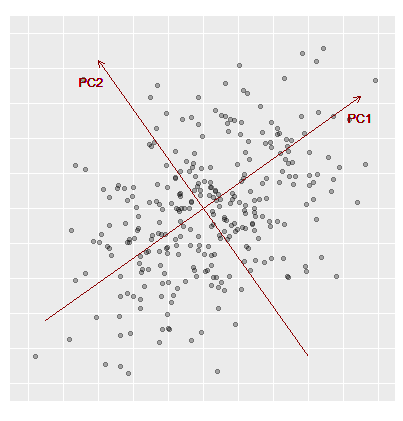PCA - rotation
Principal Component Analysis allows you to reduce the number of dimensions in a dataset, which speeds up calculation time without significant loss of informational value.
You may expect questions on PCA during the interview if your future role involves handling vast amounts of data.
Recall that in PCA the variables are transformed into principal components. The first principal component has the largest possible variance.

You will perform PCA using the cats dataset that you have already encountered in the previous exercises.
In this exercise, use prcomp() to perform the principal component analysis. The returned object can be used to predict the rotated variables.
This exercise is part of the course
Practicing Statistics Interview Questions in R
Hands-on interactive exercise
Have a go at this exercise by completing this sample code.
# Plot the unrotated data
___(___ ~ Hwt, data = ___)
# Perform PCA
pca_cats <- ___(~ ___ + Hwt, data = ___)
# Compute the summary
___(___)